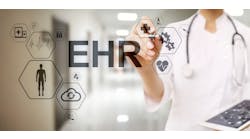There’s been a lot of talk lately about empowering patients to take part in their healthcare and improving how doctors communicate with their patients. Just today the New York Times reported about how Carolyn Bucksbaum and her husband Matthew donated $42 million to create the Bucksbaum Institute for Clinical Excellence at the University of Chicago Medical Center to improve medical students’ bedside manner.What impelled Bucksbaum to donate the money to improve doctor-patient communication was a personal experience in which a physician dismissed Bucksbaum’s intuition concerning an ailment she had. It turned out Bucksman was right, and she never received an apology from her doctor.This initiative got me thinking about this whole patient empowerment movement that the ONC has started, putting the “I” back in Health IT. What more needs to be done to get patients really involved with their care and actively using personal health records? This was one of the topics, as well as how providers can utilize analytics with HIE data to provide proactive care, that industry leaders were discussing at the IHT² Health IT Summit at the Westin Times Square in New York City on Sept. 21“I think we have a long ways to go before patients feel like they own their own medical record,” said Cathleen Crowley, CIO, Columbia Memorial Hospital, located in the Hudson Valley in New York State. “Most people don’t ask for their electronic summary when they leave the hospital.”May Terry, eHealth solutions architect, GE Healthcare (Waukesha, Wis.) was talking about the work her company was doing to enable patient empowerment through the Keystone Health Information Exchange (KeyHIE), which interconnects the Danville-based Geisinger Health System and five other regional northeast Pennsylvania hospitals—Community Medical Center (Scranton), Evangelical Community Hospital (Lewisburg), Mid-Valley Hospital (Peckville), Moses Taylor Hospital (Scranton), and Shamokin Area Community Hospital (Coal Township). Terry said that KeyHIE was working on providing patient health risk assessments. After a patient participates, they get a wellness specialist assigned to them who will help provide education and help the patient fill out their own personal health record.Do you have a story of patient empowerment or communication improvement you’d like to share? Leave it in the comments below.***Updated Monday, Sept. 26: I just watched an episode of the Laura Linney cancer dramedy, The Big C, over the weekend, and there was a really good clip that illustrated how important it is for physicians to speak patient-ese. Watch below:
Sponsored Recommendations
Sponsored Recommendations

